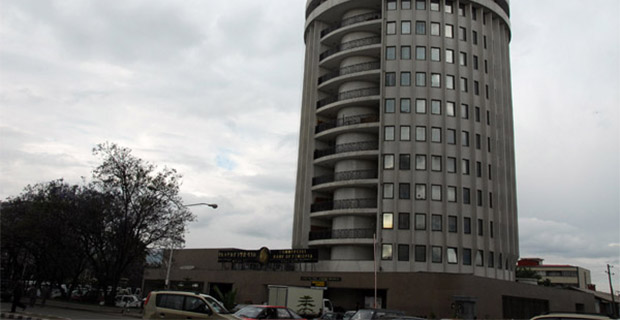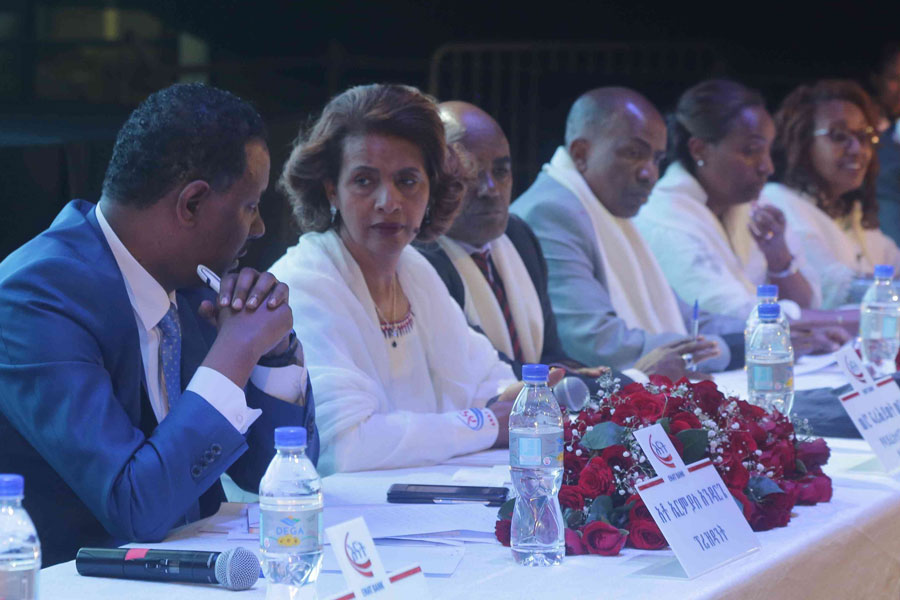
News Analysis | Dec 02,2023
Shabelle Bank may stand out for its pioneering history as a microfinance institution transitioning to a full-fledged commercial bank. It began with a unique proposition of Sharia-compliant banking services in microfinance. Though rich in its founders' ambitions, the transition has unfolded, blending milestones and snags, notably as the Bank marked its inaugural year in the commercial banking domain.
Its first year as a commercial entity was marked by a slight downturn in performance. Net profits declined 1.4pc to 19.84 million Br, trailing industry peers Hijra and ZamZam banks, which netted 27.8 million Br and 24.1 million Br, respectively. The profit dip has drawn attention to the hardship of transitioning from a microfinance institution to a commercial banking model.
The London-based financial analyst, Abdulmenan Mohammed (PhD) noted inconsistencies in the Bank's profit calculations from the previous year, signalling that Shabelle Bank might have understated its taxable profit, which could impact its legal reserves, retained earnings, and year-on-year comparisons.
While reviewing Shabelle Bank's financial statements, the external auditor, Surafel Akalu Certified Audit Firm, flagged a potential typographical error related to the transition to commercial banking standards. The discrepancy stems from the 2009 microfinance regulation, which exempts such institutions from profit taxes if they do not distribute dividends. Abdulmenan urged for more transparent financial reporting, suggesting that the Bank's profits as a microfinance institution and as a commercial bank should be presented in two separate statements, considering they represent different operational models.
Founded as the Somali Microfinance Institution, Shabelle Bank was the first to cater to a market segment that preferred interest-free banking, filling a notable financial services sector gap. Its evolution gained a landmark in 2021 when it secured a commercial banking license from the National Bank of Ethiopia (NBE), repositioning it to expand its offerings and reach within the banking industry.
The financial year also saw Shabelle Bank struggle with substantial expenses and a rise in profit taxes from 446,330 Br to 13.35 million Br. Wage expenses surged by 50pc to 187.42 million Br, although still lower than those of Hijra and ZamZam. Other operating expenses also saw a 65pc increase, reaching 281.95 million Br, and the provision for asset impairment soared by 314.2pc to 14.62 million Br.
Shebelle Bank opened seven branches, bringing the total to 50, a strategic move its executives made to bolster its presence nationwide and increase the workforce. Despite the associated costs, Khadir Ahmed, the founding president, remains upbeat about the Bank's prospects, viewing the current operational expenses as a temporary hurdle the Bank is well-positioned to overcome.
"Higher profits will return in the future," he told Fortune.
An Axum University alumnus, Khadir worked at the Somali Regional State's Finance Bureau before joining Shabelle's management when it was a microfinance institution. He holds postgraduate degrees from Jigjiga and Uganda's Makerere universities. Under his watch, Shabelle Bank's liquidity level increased in value but declined in relative terms. Cash and cash equivalents increased by 17.6pc to 853.5 million Br, almost a third of Hijra's 2.4 billion Br. The cash and cash equivalents to total assets ratio decreased by 0.3 percentage points from 23pc.
Abdulmenan found Shabelle's liquidity level slightly higher than its operational requirements and urged that the excess liquid resources be used to earn more income. However, Khadir argued that the seemingly excess liquidity arises from deposits moving around through the mobile money platform HelloCash.
"We would still invest if secondary markets existed," he said.
Abdulmenan's concerns about Shabelle Bank's transition reflected the evolution challenges. He noted that the expansion in expenses had overshadowed the impressive revenue growth. He cautioned that the Bank's management should be wary of this trend, warning that Shabelle's performance could have been adversely affected had it not been for the absence of financing costs, given its interest-free banking model.
"Executives need to work hard to improve their performance," he told Fortune.
Shabelle Bank reported a notable increase in income from financing, which rose by 265pc to 192.91 million Br, primarily driven by an increase in markup rates. Fees and commissions grew by 11.1pc to 242.95 million Br, and other income saw a 177pc increase to 51.32 million Br, revealing the Bank's potential to leverage its unique market positioning to drive growth and profitability.
Ownership structure and shareholder engagement have also played crucial roles in Shabelle Bank's strategic evolution. With the Somali Regional Government holding a dominant 73pc stake, Shabelle Bank benefits from a strong backing that could support its expansion and operations.
Board Chairman Hassen Mohammed told shareholders who met in Jigjiga town in December last year, the seat of the Somali Regional State, that implementing a core banking system branch module and constructing a building for the central vault were key milestones of the past year. Adopting Sharia-compliant services such as Murabaha and Mudrabah has been recognised as a potential area for growth. According to Yasin Essie Usman, one of the 1,101 founding shareholders, the delay in implementing these services has been noted to impede Shabelle's expansion, stressing the importance of aligning operational practices with market demands and Sharia-compliant banking principles.
"I hope they advance soon," he told Fortune.
Yasin expressed tempered expectations about investment returns, acknowledging the investments and operational expenses associated with the Bank's expansion and transition. Yasin also emphasised the importance of directing more financing towards pastoralists and agro-processors, reflecting the Somali Regional State's majority ownership and its policies of prioritising the region's economic preoccupation.
Despite impediments in its first year of commercial operation, Shabelle Bank's total assets grew by 19pc to 3.76 billion Br, although this remains below the asset bases of Hijra and ZamZam. It also saw a 60.2pc growth in mobilised deposits to 801.6 million Br, although loans and advances, at around 1.88 billion Br, remained nearly unchanged from the previous year. Unlike other commercial banks, the loan-to-deposit ratio does not apply to Shabelle as it financed its operation mainly using contractual liabilities amounting to 2.2 billion Br (1.42 billion Br in 2022/21 plus trade creditors of half a billion Birr.)
According to Kahdir, some financing was obtained from the Somali Regional State's budget allotted for job creation, which was disbursed as a loan in addition to disbursements from mobilised deposits. The Bank expanded its financial and operational areas despite the wide-ranging shortfalls in the operating environment.
"There was also a massive repayment of previous loans," he said.
Shabelle increased its paid-up capital by 15.3pc to 594.93 million Br while its return on equity (ROE) improved one percentage point to five percent despite remaining far below the minimum saving rate. The Bank's capital adequacy ratio (CAR) increased to 32.7pc from 28, well above the regulatory minimum of eight percent and the 26.7pc average for the 16 top private commercial banks.
Zerihun Berhe, manager of the year-old Wello Sefer Branch, said a broader promotion campaign is needed to enable the Bank to compete with veteran financial institutions in the area.
"Competing with the older banks in terms of service is difficult," he told Fortune.
PUBLISHED ON
Apr 06,2024 [ VOL
25 , NO
1249]

Radar | Oct 22,2022

Fortune News | Jan 19,2019

Fortune News | Apr 10,2023

Radar | Oct 19,2019

Radar | Jul 13,2024

Dec 22 , 2024 . By TIZITA SHEWAFERAW
Charged with transforming colossal state-owned enterprises into modern and competitiv...

Aug 18 , 2024 . By AKSAH ITALO
Although predictable Yonas Zerihun's job in the ride-hailing service is not immune to...

Jul 28 , 2024 . By TIZITA SHEWAFERAW
Unhabitual, perhaps too many, Samuel Gebreyohannes, 38, used to occasionally enjoy a couple of beers at breakfast. However, he recently swit...

Jul 13 , 2024 . By AKSAH ITALO
Investors who rely on tractors, trucks, and field vehicles for commuting, transporting commodities, and f...

Jul 5 , 2025
Six years ago, Ethiopia was the darling of international liberal commentators. A year...

Jun 28 , 2025
Meseret Damtie, the assertive auditor general, has never been shy about naming names...

Jun 21 , 2025
A well-worn adage says, “Budget is not destiny, but it is direction.” Examining t...

Jun 14 , 2025
Yet again, the Horn of Africa is bracing for trouble. A region already frayed by wars...